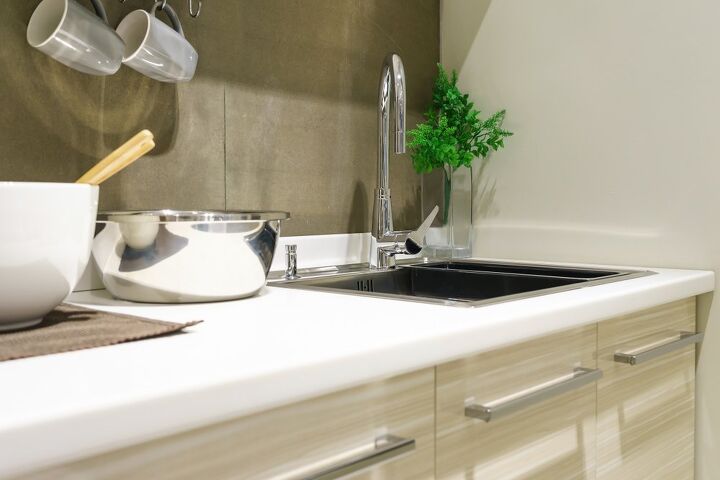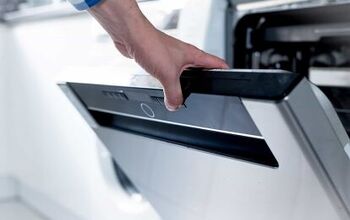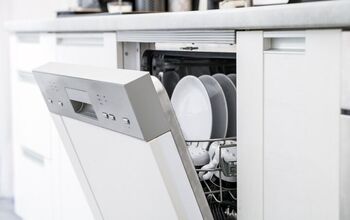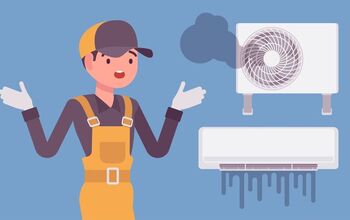Why Is Water Coming Out Of My Dishwasher Air Gap?

These days, dishwashers are common residential appliances, which means that many homeowners are interested in learning about dishwasher maintenance and repair. If your dishwasher employs an air gap device, then there are a few specific problems that could pop up.
If you think that your air gap device is malfunctioning, this article will help you diagnose the problem, and it will present tips for repair as well. But if you do need to repair your system, it’s best to get in touch with a professional plumber, as air gap devices aren’t the easiest things to tinker with if you lack experience, know-how, and proper tools.
Water coming out of the dishwasher air gap is an indication that there’s a clog somewhere, most likely in the drain pipe. The contaminated water will go into your sink and down the drain, and it’ll do so because it can’t be released into the dishwasher. It can’t be released into the dishwasher because of the air gap technology employed.
Do You Need to Hire a Plumber?
Get free, zero-commitment quotes from pro contractors near you.

What Is a Dishwasher Air Gap?
Generally, an air gap is a device that’s mounted two inches above a sink, and this device is a simple way to ensure your dishwasher never runs with dirty water. If you run dishes through the dishwasher and you notice a lot of grime, there may be a problem with the air gap you’re using.
An air gap will completely separate a clean-water hose from a dirty-water hose, and since these two components never intersect, there’s no chance of dirty water getting back into your appliance.
Preventing Backflow Contamination
An air gap device will prevent backflow from getting into your dishwasher. Backflow is another name for wastewater, and this can find its way into a clean water supply when there’s nothing to prevent this from happening.
Because of how dishwashers are configured with sinks—in that they share the same drains and pipes—there’s always a chance that backflow could find its way into the clean water supply. This is why something as reliable as an air gap is employed because even a few drops of contaminated water can nullify what the dishwasher is supposed to do.
How Backflow Can Show Up in Clean Water
The air gap is made possible because of pressure, and when there’s a problem with pressure delivery, wastewater leakage is the likely result. Think, for example, about when a sink drain gets clogged. The dishwasher’s hose, which is connected to the drain, will begin to siphon wastewater back into the dishwasher.
If this happens without the presence of an air gap—or any other kind of backflow prevention system—then your dishwasher and everything inside it will be affected by contaminated water. Air gap systems are very good at what they’re supposed to do, but when one starts to malfunction, a variety of problems can be just around the corner.
How a Dishwasher Air Gap Device Works
Without a dishwasher air gap device, there would be a chance of contaminated water coming into contact with the clean water meant for the dishwasher; this much has been established so far. As far as design is a concern, one branch of the air gap fitting is connected to the dishwasher while the other branch is connected to the garbage disposal.
The hose will run the dirty water upward from the dishwasher, and at its peak, the branch will end, water will pour out and into a tube, through the air gap, and down into the second branch, where the wastewater will be delivered to a designated drainage site.
Both branches will be installed below the sink or countertop, and most air-gap devices include decorative heads that will extend well above the counter. These usually go next to faucets or soap dispensers.
Inside the head is the vertical air gap, and air gaps are notched with holes so that—in the event of clogging or obstructed tubing—water will be released into the sink. If you notice something wrong with your air gap device, it’s likely related to a clog somewhere.
Clearing a Clogged Dishwasher Air Gap
The first thing you must do is remove your air gap’s chrome cover, as doing so will expose the plastic cap. Next, you have to unscrew the cap from the air gap device. Now look inside and see if there’s any debris present. If there is, remove this and then wipe the cap clean with a paper towel.
The next step is covering the air gap device with the hose of a powerful vacuum. Turn on the vacuum to remove whatever debris is inside; this should provide suction all the way down to the garbage disposal.
Now you should turn on the hot water and let this fill up the garbage disposal. Once the disposal is full, suck out the hot water with the vacuum, through the air gap line to ensure a thorough cleaning. When the air gap is unclogged, this will prevent water from coming out of the air gap vents.
Are Air Gap Devices Useful?
An air gap device is an effective tool that will prevent backflow from getting into your dishwasher. If you want to protect your dishwasher from contaminated water, then employ an air gap.
They are considered expensive by some, and installing one will cost a few hundred dollars as well. One should keep in mind, however, that in some places, air gap technology is actually required by local plumbing code. There are other ways of preventing backflow, but air gaps have been shown to be effective under a variety of circumstances.
They don’t have any moving parts, and for this reason, some consider them to be infallible. They also work based on simple physics, as water cannot pass through a pressurized gap of air.
And if the drain does become clogged, all that happens to the dishwasher backflow is that it goes out the holes of the air gap and into the sink. Other backflow prevention technology can discourage cross-contamination, but only an air gap will guarantee 100% protection more than nine times out of 10.
Do You Need to Hire a Plumber?
Get free, zero-commitment quotes from pro contractors near you.

Related Questions
Air gap technology is becoming more common these days, and therefore many homeowners have questions about this technology. Some of the frequently asked questions are answered below.
How do I know if I need an air gap device?Your dishwasher doesn’t need an air gap, but this is an effective way of preventing cross-contamination. Your system needs to be capable of using an air gap device, and you’ll also need other components, like a garbage disposal. If you’re looking to pursue installation, get in touch with a plumber, as they’ll be able to tell you what your options are.
Is it bad if backflow comes into my sink?Air gap technology is quite reliable and it’s been around for many years now. If your sink is full of dirty water when you wake up one morning, it’s likely that there’s a drain clog, but at least you’ll know this without finding out the hard way. And if your air gap filter is malfunctioning, it’s at this point that you should get help from a plumber.

Matt loves everything DIY. He has been learning and practicing different trades since he was a kid, and he's often the first one called when a friend or family member needs a helping hand at home. Matt loves to work with wood and stone, and landscaping is by far his most favorite pastime.
More by Matthew Mountain
















![How To Reset A Whirlpool Cabrio Washer [In 5 Easy Steps!]](https://cdn-fastly.upgradedhome.com/media/2023/07/31/9076531/how-to-reset-a-whirlpool-cabrio-washer-in-5-easy-steps.jpg?size=350x220)










